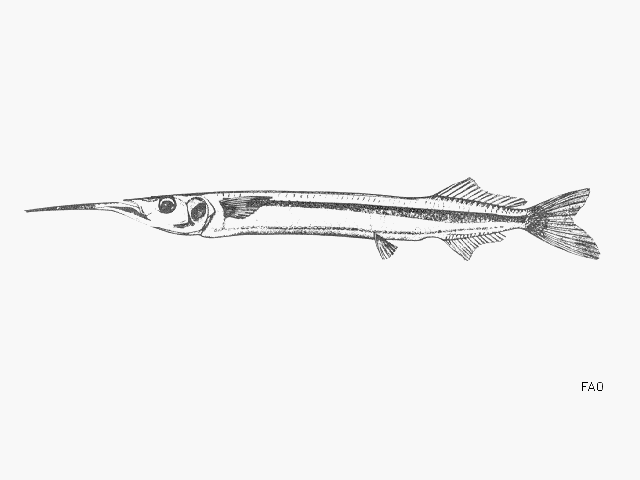| Hemiramphidae (Halfbeaks) |
| 20 cm TL (male/unsexed) |
|
benthopelagic; brackish; marine; depth range - 0 m |
| Eastern Atlantic: West to Gibraltar, Morocco and Dakar, Senegal to Luanda, Angola. Eastern Mediterranean: From Lebanon and Israel. |
|
Dorsal spines (total): 0-0; Dorsal soft rays (total): 13-16; Anal spines: 0-0; Anal soft rays: 13-17. Diagnosis: body elongate; lower jaw forming long, narrow beak; upper jaw short, triangular and scaled; scales on snout; well developed preorbital crest between eye and nasal pit; pelvics fin abdominal; dorsal and anal fins placed far back on body and spineless; caudal fin slightly forked (Ref. 57227).
Description: fins spineless; pectoral fins short, tips not reaching to nasal pits when fins folded forwards; pelvic fins short; lower lobe caudal fin longer than upper; lateral line running low on body, with anterior branch directed to pectoral-fin base (Ref. 57227).
Coloration: back greenish, belly silvery white; narrow dorsally black-edged band along sides, and black lines on dorsal profile, extending from head to dorsal fin; fleshy tip of beak red; caudal fin pale with dark margins (Ref. 57227). |
| Occurs in coastal waters. Often enters estuaries (Ref. 2683). Live on or near the bottom where it feeds on algae and organic debris which it gathers from the surface of the sediment (Ref. 5377). Forms schools. Attracted to lights at night. Eggs are attached to aquatic vegetation by sticky threads (Ref. 6730). |
|
Least Concern (LC); Date assessed: 10 July 2012 Ref. (130435)
|
| harmless |
Source and more info: www.fishbase.org. For personal, classroom, and other internal use only. Not for publication.

